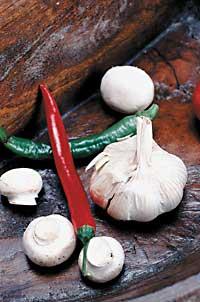Spices and condiments

In addition to the taste and smell, other properties have been taken into account when using these substances. Clove, for example, has been used in Europe for its aphrodisiac properties and to disguise the bad taste of foods that would rot or were being lost. Cumin, on the other hand, is usually added to the beans, because with it a lower generation of air is achieved.
In any case, it is important to seek a balance in the flavors and prevent the flavors of the sweet or spice eat those of the food.
Taking this into account, the enjoyment of food is the art of properly combining flavors and smells, which manages to enhance its flavor without diminishing the nutritional and dietary value of the foods that compose it.
From a nutritional point of view, there is no essential or necessary species or seasoning. But we cannot deny that many of them can turn a tasteless dish into a very attractive dish.
The name says it all
Sweeteners adhere to their name and are added to foods to enhance their flavor. They taste acidic, salty or spicy and are used in small amounts. The best known are:
Lemon, garlic, vinegar and salt
Well known and widely used.
Aromatic herbs
Parsley
The leaf of this plant gives a special aroma and flavor to various dishes. Diuretic and stimulating effect.
Laurel
If we add a bay leaf to the cooked, we will facilitate digestion as it helps to generate less wind.
Romero
Recommended for stews, especially for people with biliary problems, as it causes emptying.
Thyme
Increases the taste of roasted potatoes, chicken and stews. It is also intestinal cleaner or antiseptic.
Saffron
Its flower is used as a condiment of the stews for its pleasant and attractive colors and flavors. It improves digestion in small amounts, but in larger amounts it can be toxic to the nervous system.
Oregano
Leaves and flowers of this plant are used as condiments. It is a very common pleasure in the Mediterranean diet. For example, it is added to pasta, green beans and pizzas. Prevents the generation of winds in the intestine.
Comino

It is a very small fruit, but with a strong flavor. Used in salad, vegetables, rice, chicken, sauce and cooked.
From the Tropics to the domestic kitchen
Spices, on the other hand, are dry parts of tropical plants, with strong or spicy flavor. They should be used carefully as they can have adverse effects at high doses. The best known are:
Cinnamon
It is the surface of the young branches of the cannelloni that grow in America and Asia. Sale of skin or dust. Its flavor is sweet and is mainly used for the enjoyment of desserts. It facilitates digestion and is astringent. Those who have an ulcer should not take cinnamon.
Nail
Moluccas are the floral eyes of the islands' trees. Its flavor is both spicy and sweet. In general, it is stimulating and, in addition to awakening hunger, helps create less wind. It does not suit those who have gastritis or ulcer, and in high doses it is irritating to the entire digestive system.
pepper to taste
Dry fruit from an Indian tree. It is used in three ways: with the skin, with the subcutaneous membrane or without skin, and in this way black pepper, red pepper and white pepper are distinguished, respectively. Alkaloid chilli is the one that gives it spicy flavor and black pepper is the one that has the most flavor. Piperidine increases the production of gastric juices. Pepper facilitates the digestion of foods rich in fats and proteins. Avoid the use of gastritis, ulcers, pancreatitis, hemorrhoids and high tension.
Advantages and disadvantages of spices and condiments
Advantages:
- They increase the desire to eat, since reinforcing the flavor of the meals awakens the appetite. Therefore, they are recommended for people with little hunger. They increase the digestive secretions both saliva and intestinal and sandy. This facilitates digestion. They reduce intestinal winds, especially aromatic herbs. They allow to reduce the use of salt, so they are recommended for people with high tension and renal or heart failure.
- It helps maintain food. Thyme, clove and cinnamon have antifungal effects, that is, they prevent fungi. For example, lentils preserved with these substances say they contain virtually no aflatoxins.

Cons:
- They can irritate the stomach, especially pepper, by spicy spices. Ingestion of spices along with certain drugs and alcohol can increase the risk of gastritis and gastric hemorrhages. Various species can produce allergies, sometimes with nasal itching, coughing, gut pain or skin reactions. Frequent consumption of spices can generate tolerance, that is, to achieve the same effect it is necessary to increase the dose and in some cases this poses a risk. Some species cause the need to ingest more liquid in food, which slows digestion.





